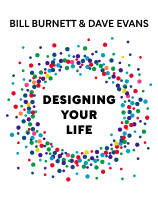

This article is an excerpt from the Shortform book guide to "Designing Your Life" by Bill Burnett and Dave Evans. Shortform has the world's best summaries and analyses of books you should be reading.
Like this article? Sign up for a free trial here .
How can a team contribute to your life designing endeavors? How do you put such a team together?
Life design is an ongoing process—you shouldn’t go it alone. Teamwork is part of design thinking. You live your life in a community, so it makes sense to design your life in collaboration with others.
Keep reading to learn how to put together a life designing team.
Your Life Designing Team
In your ongoing project of designing your life, a team can play a helpful role.
Defective belief: This is my life, so I have to design it on my own.
- Corrected belief: I live and design my life in collaboration with other people.
One of the five basic mental attitudes of design thinking is deep teamwork. This attitude says life design is a collaborative and communal process instead of a solitary, “heroic” artistic pursuit. Many life designing skills, such as wayfinding and prototyping, depend on participation by other people. In life design, you don’t create but co-create ideas and opportunities. Your life design is “out there” in the world of people and relationships, not inside your head. Wayfinding journaling and prototyping efforts can lead you to consider and become involved with various people.
Now you need to take the next step of consciously identifying your team, which includes two levels: general and specific.
Establishing Your Team
Your life designing team will comprise a general team, a subset of that team, and possibly a mentor or two.
Your General Team
Your general team consists of people who play three different roles:
- Allies are friends and others who care about your life and willingly provide feedback on your plans. You can count on them to “be there” for you.
- Key players are direct co-workers in your life designing efforts.
- Intimates are your family members and closest friends. They’re the most influential people in your life designing project. It can be tricky to figure out what role they should play. At minimum, always be sure to keep them informed, so there won’t be any surprises.
Your Specific Team
Your specific team consists of three to six people whom you pick from your general team to share your life designing project directly. Consider choosing people who are already involved, such as the ones who gave feedback on your alternative Odyssey Plans.
When your team meets, make sure you all follow simple and clearly defined rules to maximize the benefits of their role as co-creators of your life design. For example, you might specify that everyone needs to be respectful at meetings, provide constructive advice instead of criticism, and keep all team business private. Each meeting needs a facilitator to ensure the conversation remains focused and flows productively. The most natural person for this role is you. As facilitator, make sure everyone gets to speak.
The Value of Mentors
If possible, include one or more mentors on your specific team. Or at least try to find one among your general team. Mentors are people who don’t so much tell you what to think as help you think for yourself and sharpen your own insights and decision-making. They listen closely to what you say and help you reframe defective beliefs. When you have to make decisions (see Chapter 9), they help with your discernment process. Some people may be lifelong mentors to you. Others may only mentor you through a specific life period or on a specific topic. Scan through your relationships right now and see if you can identify any potential mentors. Then approach them and ask for their advice.
The Gift of Community
Beyond serving as a life designing team, you may find that the group of people you gather turns into a genuine community, a group of individuals who are deeply invested in each other’s life. If this happens, be grateful for such a gift.
Communities are characterized by such things as a shared purpose, a habit of getting together regularly, and a core of shared values and attitudes. In a life designing community, there’s also the added habit of talking together sincerely and openly about your lives, your dreams, and how you’re trying to unite these in a lifelong experience of happiness and success. Having such a community is one of the best ways to ensure that your life designing efforts bear fruit and take you where you want to go.

———End of Preview———
Like what you just read? Read the rest of the world's best book summary and analysis of Bill Burnett and Dave Evans's "Designing Your Life" at Shortform .
Here's what you'll find in our full Designing Your Life summary :
- Why finding your "true passion" in life is a myth
- The five mental attitudes in design thinking
- How to design a meaningful life in which you can truly thrive






